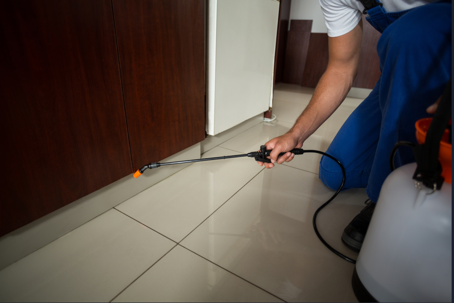Designed by Kilter Termite & Pest Control to help you tackle our area’s most common pests—ants, spiders, cockroaches, termites (minor infestations), earwigs, and occasional invaders like silverfish and fleas.
If you run into any problems or just want a professional to handle your pest problems, give Kilter a call anytime (866) 827-1727 or visit www.kiltertermite.com.
🐜 DIY General Pest Control Guide for Southern California Homes
Goal: Maintain a pest-free home year-round using safe, effective, and affordable do-it-yourself methods.
🔍 Step 1: Identify Common Pests in Your Area
Southern California's warm, dry climate attracts:
Pest | Signs |
Ants (Argentine & Carpenter) | Trails, kitchen counter activity |
Spiders | Webs in corners, garages |
Cockroaches | Night sightings, droppings under sinks |
Earwigs & Silverfish | Found in damp bathrooms and garages |
Fleas | Pet scratching, flea dirt in bedding |
Occasional invaders | Crickets, centipedes, beetles |
🧰 Step 2: Must-Have DIY Pest Control Tools
Item | Use |
Bifenthrin/Cypermethrin Spray | General exterior barrier |
Diatomaceous Earth (DE) | Natural, indoor-safe dust for cracks and crevices |
Bait Stations (Ant & Roach) | Kills at colony level |
Gel Baits | Precise indoor applications |
Sticky Traps | Monitoring pest traffic |
Essential Oils (e.g., peppermint, tea tree) | Natural repellents |
Hand Sprayer or Backpack Sprayer | For perimeter treatment |
🏠 Step 3: Exterior Treatment – First Line of Defense
✅ Do this every 2–3 months:
- Spray liquid insecticide (e.g., Bifenthrin) around:
- Foundation perimeter (2–3 ft wide)
- Window and door frames
- Garage edges, eaves, and base of walls
- Under decks, crawlspace vents
- Apply Diatomaceous Earth or boric acid dust into:
- Wall voids
- Electrical outlets (carefully)
- Gaps in siding or stucco
Pro Tip: Don’t just spray where you see pests—create a full barrier.
🧼 Step 4: Indoor Prevention & Spot Treatment
- Vacuum regularly: Crumbs and hair attract pests
- Use caulk or foam to seal wall gaps and under sinks
- Place bait traps near:
- Behind appliances
- Under sinks
- Pantry corners
- Apply natural repellents near doorways and vents (peppermint or citrus oil)
- Use sticky traps behind toilets, washers, or storage closets
🐶 Step 5: Pet & Family Safety
- Always store pesticides out of reach
- Use pet-safe products (look for “OMRI Listed” or food-grade DE)
- Apply sprays and let dry fully before allowing kids/pets into treated areas
- Never mix chemicals unless the label explicitly says it’s safe
- When spraying wear protective eyewear & facemask
📅 Annual DIY Pest Control Calendar
Month | Action |
Jan–Mar | Apply perimeter spray before spring swarm season |
Apr–Jun | Watch for ants, spiders, termites; refresh bait stations |
Jul–Sep | Re-treat perimeter; reduce indoor humidity |
Oct–Dec | Inspect attic, garage; set traps for overwintering pests |
🚫 When to Call a Professional
- If you see termite evidence anywhere on the property
- Cockroach or flea infestations beyond 1 room
- You find rodents or rodent droppings in attic/walls/vents/food storage areas
- You’ve treated 2 times without significant results
✅ DIY Pest Control Checklist
- Inspect home monthly (inside and out)
- Apply perimeter spray every 90 days
- Keep food sealed and floors clean
- Store firewood away from the home
- Treat any entry points, cracks, or gaps
- Monitor pest levels with sticky traps
Would you prefer to speak to a pest control professional? If so, please call (866) 827-1727

